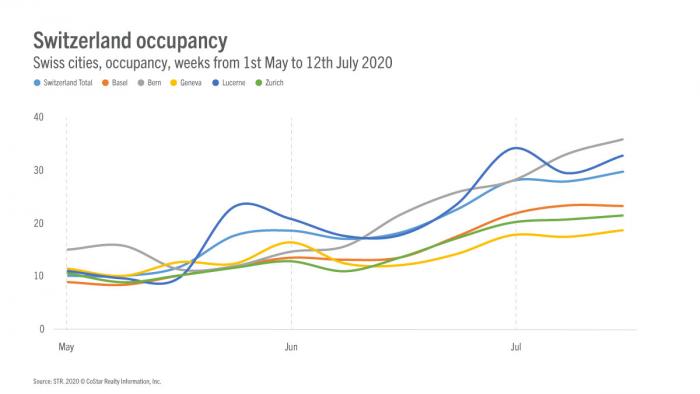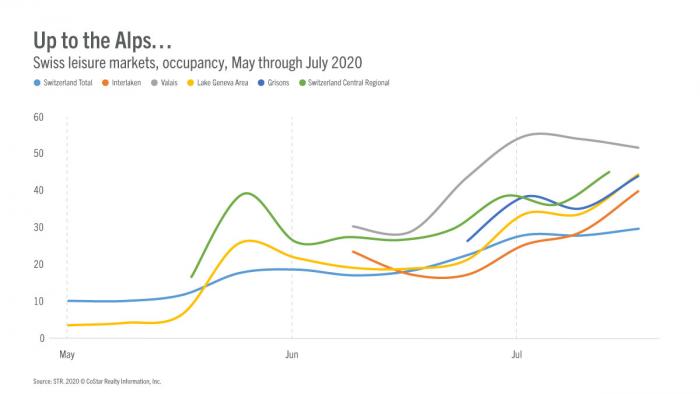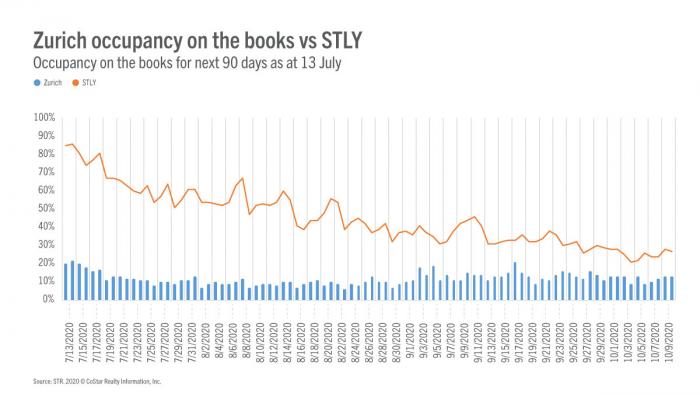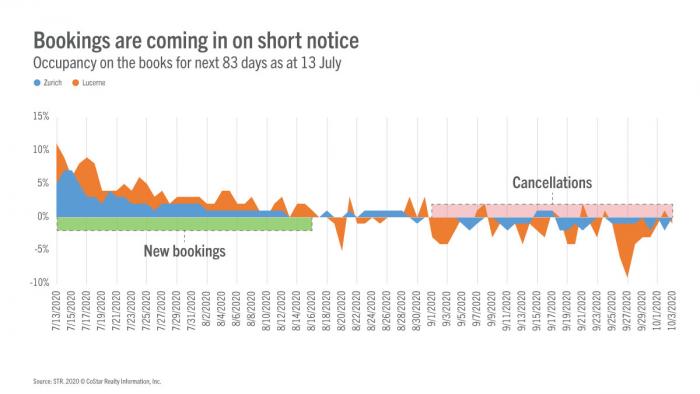Travel restrictions and lockdown measures in response to the COVID-19 pandemic have forced widespread hotel closures and unprecedented performance declines around the globe. Switzerland have been no exception to the trend, posting 10%-15% occupancy levels average during lockdown.
On 15 June, however, Switzerland lifted all COVID-19-related entry restrictions for travelers from other Schengen countries, providing an additional flow of travelers for the country’s reopening hotels and quickly increasing occupancy levels as we’ve seen through recent analysis.
Switzerland, one of the early leader in Europe’s recovery
Switzerland, along with Germany, posted one of Europe’s highest weekly occupancy levels (29.8%) for the seven-day period ending 12 July.
Within that occupancy, there were noticeable differences between key Swiss cities. For example, for the week ending 12 July, Bern posted the highest occupancy (36%) followed closely by Lucerne (33%) thanks to higher domestic demand around the start of summer holidays. Basel, Zurich and Geneva, on the other hand, posted occupancy levels below 25% during the same period of time.



